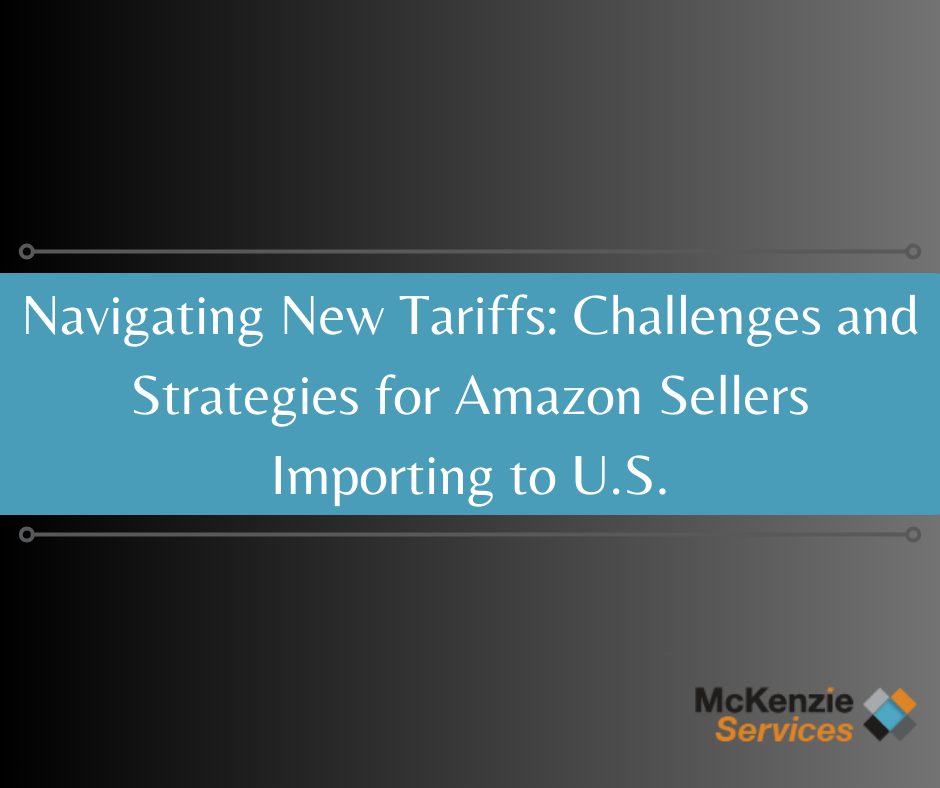Navigating New Tariffs: Challenges and Strategies for Amazon Sellers Importing to U.S.
Surviving the 2025 Tariff Storm: A Guide for Amazon Sellers Importing to U.S. Prep Centers
If you’re an Amazon seller relying on imports from China, you’ve probably felt the sting of the latest tariff changes—like a slap in the face with a customs form. 😬
In 2025, the U.S. government made some big moves: they scrapped the de minimis exemption for Chinese imports (yes, even the cheap stuff), slapped on tariffs up to 145%, and sent shockwaves through global supply chains.
Suddenly, importing that $20 gadget from your supplier in Shenzhen? It could now come with a $29 tariff. Ouch.
Wait… What’s De Minimis, Anyway? 
Think of de minimis as the “free pass” threshold for imported goods. It used to let anything under $800 into the U.S. without tariffs. Now, for goods coming from China? That pass has been revoked. Every little item counts—and so do the taxes.
The Tariff Trouble
This change hits everyone—from e-commerce giants like Shein, Temu, and AliExpress to U.S.-based Amazon sellers sourcing from Chinese suppliers. Many sellers are staring down tariffs that actually cost more than the products themselves.
And if you’re importing to a U.S. prep center or FBA warehouse? It’s not just annoying—it’s business-threatening.
So… What Can You Actually Do About It?
Good news: You’ve got options! Smart sellers are getting creative. Here are some real strategies Amazon sellers are using to stay afloat (and profitable):
1. Diversify Your Supply Chain
The “China Plus One” strategy is trending for a reason. Sellers are branching out to places like:
-
🇻🇳 Vietnam – Great for some products, but most factories are maxed out (12+ month waitlists!)
-
🇲🇽 Mexico – Close by, but facing labor and manufacturing limitations
-
🇮🇳 India – Excellent for textiles, not ideal for complex components
-
🇵🇱 Eastern Europe – High-quality output, but costs more
Switching countries takes time and planning—but it’s a solid move long-term.
2. Team Up with a 3PL (Like Us!)
Tariffs are complicated, but a good third-party logistics (3PL) provider can make things easier. McKenzie Services can help you:
-
Classify products correctly (so you don’t pay more than you have to)
-
Find smarter, cheaper shipping routes
-
Store your goods until you’re ready to ship to Amazon—or straight to your customers
Basically, we do the logistical heavy lifting so you can focus on selling.
3. Use Trade Agreements to Your Advantage
Did you know some goods shipped from Canada or Mexico may be tariff-free under the USMCA? A savvy 3PL (👋 hey, that’s us) can help identify which of your SKUs qualify.
4. Get Smart About Inventory
If you’re overstocked during a tariff hike, it can be painful. If you’re understocked and can’t reorder affordably, that’s worse.
Try using tools like:
-
🧠 RestockPro – For automated restocking based on demand and profit metrics
-
🔍 SoStocked – For more advanced forecasting with buffer stock and seasonality control
When you control inventory, you control your margins.
5. Spread Out Your Sales Channels
If all your eggs are in the Amazon basket, a policy change like this can break a lot of eggs. 🥚🥚🥚
Now’s the time to branch out:
-
Launch a DTC site (Shopify, anyone?)
-
Try Walmart Marketplace or even niche platforms
-
Explore wholesale options with U.S. retailers
And yes—we can help with that too.
Final Thoughts: It’s Tough, But Not Hopeless
There’s no sugarcoating it—these new tariffs are brutal. But with the right mix of strategy, flexibility, and expert support, you can adapt and thrive.
📦 Need help navigating it all? Reach out to McKenzie Services. We’re here to support your Amazon business, from customs headaches to fulfillment wins.


Comments are closed